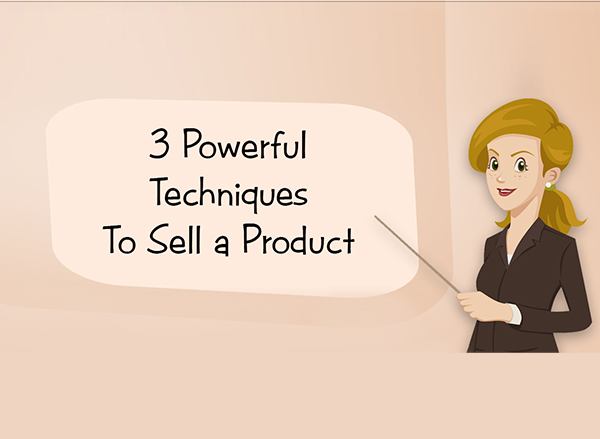Unlocking the Power of "Why": A Guide to Selling Your Product or Service
![]()
You’ve poured your heart and soul into creating something amazing – a product or service that you believe in. Now, the challenge is to get it into the hands of people who will truly benefit from it. But how do you bridge the gap between your passion and a customer’s purchase decision?
The answer lies in understanding the "why" behind your product or service. It’s not just about listing features; it’s about connecting those features to the customer’s needs, desires, and aspirations. This is where the magic of effective communication comes in.

Identifying Your Ideal Customer:
Before diving into features and benefits, you need to understand who your ideal customer is. Think about:
- Demographics: Age, gender, location, income level, education.
- Psychographics: Values, interests, lifestyle, hobbies, pain points.
- Needs and Desires: What are they struggling with? What are they hoping to achieve?


Unveiling the Core Value Proposition:

Your value proposition is the single, clear statement that encapsulates why your product or service is better than the competition. It should answer the question: "Why should a customer choose you?"
To craft a compelling value proposition, consider these elements:

- Problem: Identify the specific problem your product or service solves.
- Solution: Clearly explain how your offering addresses that problem.
- Benefits: Highlight the tangible and intangible benefits the customer will experience.
- Uniqueness: What sets you apart from the competition? What makes your product or service special?



Highlighting Key Features and Benefits:
Now that you’ve established your value proposition, it’s time to delve into the specific features and benefits that resonate with your ideal customer. Here’s a framework to guide you:

1. Focus on the "What" and the "So What":
- What: Describe the tangible features of your product or service.
- So What: Explain how those features translate into benefits for the customer.


Example:
- Feature: "Our software has a user-friendly interface."
- Benefit: "This means you can easily learn and use the software, saving you time and effort."

2. Emphasize Tangible and Intangible Benefits:
- Tangible: These are the concrete, measurable benefits that customers can easily grasp.
- Example: "Our product helps you save 20% on your monthly energy bills."
- Intangible: These benefits are less tangible but equally important. They often relate to feelings, emotions, or perceived value.
- Example: "Our service provides you with peace of mind knowing your home is secure."
3. Use Storytelling to Connect with Emotions:
Stories are powerful tools for conveying your message. Instead of simply listing features, weave a narrative that showcases how your product or service solves a problem, fulfills a need, or helps someone achieve their goals.
Example:
- Instead of: "Our fitness tracker helps you track your steps and calories."
- Try: "Sarah was struggling to stay motivated with her fitness goals. Then, she discovered our fitness tracker. It helped her track her progress, stay accountable, and achieve her weight loss goals."
4. Leverage Social Proof:
Testimonials, reviews, and case studies are powerful forms of social proof. They demonstrate that other people have had positive experiences with your product or service.
Example:
- "9 out of 10 customers report a significant improvement in their sleep quality after using our sleep app."
5. Use Clear and Concise Language:
Avoid jargon and technical terms that your ideal customer might not understand. Use language that is easy to understand and resonates with your target audience.
6. Emphasize the "Why" Over the "How":
While it’s important to explain how your product or service works, focus more on the "why" behind it. Explain how it solves a problem, fulfills a need, or helps the customer achieve their goals.
7. Highlight Your Unique Selling Proposition (USP):
What makes you different from the competition? What is your unique selling proposition? This is your key differentiator and should be emphasized throughout your communication.
8. Use Visuals to Enhance Your Message:
Images, videos, and infographics can help bring your message to life and make it more engaging.
9. Offer a Strong Call to Action:
Tell your customers what you want them to do next. Do you want them to visit your website, sign up for a free trial, or make a purchase?
10. Be Authentic and Passionate:
Your passion for your product or service will shine through and inspire your customers. Be genuine and authentic in your communication.
Example: A Real-World Application
Let’s say you’re selling a new type of eco-friendly cleaning product. Here’s how you could apply these principles to your marketing:
- Ideal Customer: Eco-conscious individuals concerned about their health and the environment.
- Value Proposition: "Our cleaning products are effective, safe for your family, and good for the planet."
- Features: Biodegradable ingredients, plant-based formulas, recyclable packaging.
- Benefits: Safe for children and pets, reduces chemical exposure, protects the environment.
- Storytelling: "Tired of harsh chemicals and their impact on your family and the environment? Discover our eco-friendly cleaning products, made with plant-based ingredients that are safe for your home and the planet."
- Social Proof: "95% of our customers reported a significant improvement in their home’s air quality after switching to our eco-friendly cleaning products."
- Call to Action: "Visit our website today to learn more and order your eco-friendly cleaning products."
Remember: The key to selling your product or service is to connect with your customers on an emotional level. By understanding their needs, desires, and aspirations, you can craft a compelling message that resonates with them and inspires them to take action.

